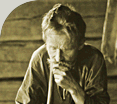 |
| Main page | Background | Villages | Revitalisation | Cultural tourism | Map | |
Uhtua |
Uhtua Poetry collecting in Uhtua What to see Panorama Audio sample |
|
For Uhtua, this change, which occurred in 1961, meant the loss of its name: with the Kalevala district now gone, the village - against the wishes of its inhabitants - was renamed "Kalevala" so that the name of the epic would somehow remain visible. The new, larger district did not last very long, and the present districts of Kemi, Kalevala and Louhi were created in Viena. Yet, the politicians did not have the courage to restore the "villages without perspective" which had been destroyed. Uhtua was not even given its original name back. When construction began on the mine and industrial complex in Kostomuksha
and the housing these necessitated, the area was still part of the
Kalevala district. However, when the population of Kostomuksha reached
10,000 in 1983, and it received its city charter, the city and its
environs At the beginning of the 1990s, the Kalevala district included the following villages and settlements: Kalevala (Uhtua), Vuonninen, Jyskyjärvi, Jyvöälahti, Kepa, Kuusiniemi, Luusalmi, Borovoi and Uusi Jyskyjärvi. In Lönnrot's time, Uhtua had 80 houses. The census of 1905 recorded 204 houses and 1,206 inhabitants in the village. In the days when poetry collectors frequented the area, Uhtua was
divided into four parts: Likopää, the wealthiest part
of the village, snaked along the shore of Lake Kuittijärvi;
Ryhjä, located between Likopää and the Uhutjoki River,
was the site of an At present, the village of Uhtua has some 5,000 inhabitants (5,230 according to the 1989 census). Karelians are now in the minority (2,360, or 45.1%) in the administrative center of their national district, a region where before the War one rarely heard any Russian spoken. Now Russian is the everyday language, with Karelian being used only among members of the older generation who are original inhabitants of the region.
|
|
Uhtua |
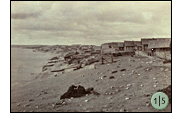
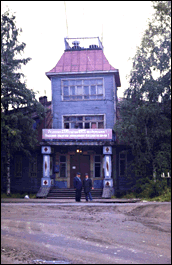
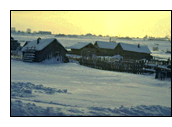 were
detached from the Kalevala district to become an administrative
unit of its own. In 1988, the area administered by the Vuokkiniemi
village council was annexed to the city, reducing the size of the
Kalevala district even further.
were
detached from the Kalevala district to become an administrative
unit of its own. In 1988, the area administered by the Vuokkiniemi
village council was annexed to the city, reducing the size of the
Kalevala district even further.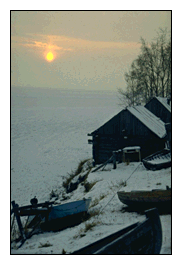 old
tšasouna and church; Miitkala, a settlement on the other side
of the river; and Lamminpohja, located on the river at one of its
wide, quiet stretches. Later additions to the village are Issakkala,
built between Lamminpohja and Miitkala, and Huponsuo, an area which
grew considerably.
old
tšasouna and church; Miitkala, a settlement on the other side
of the river; and Lamminpohja, located on the river at one of its
wide, quiet stretches. Later additions to the village are Issakkala,
built between Lamminpohja and Miitkala, and Huponsuo, an area which
grew considerably.